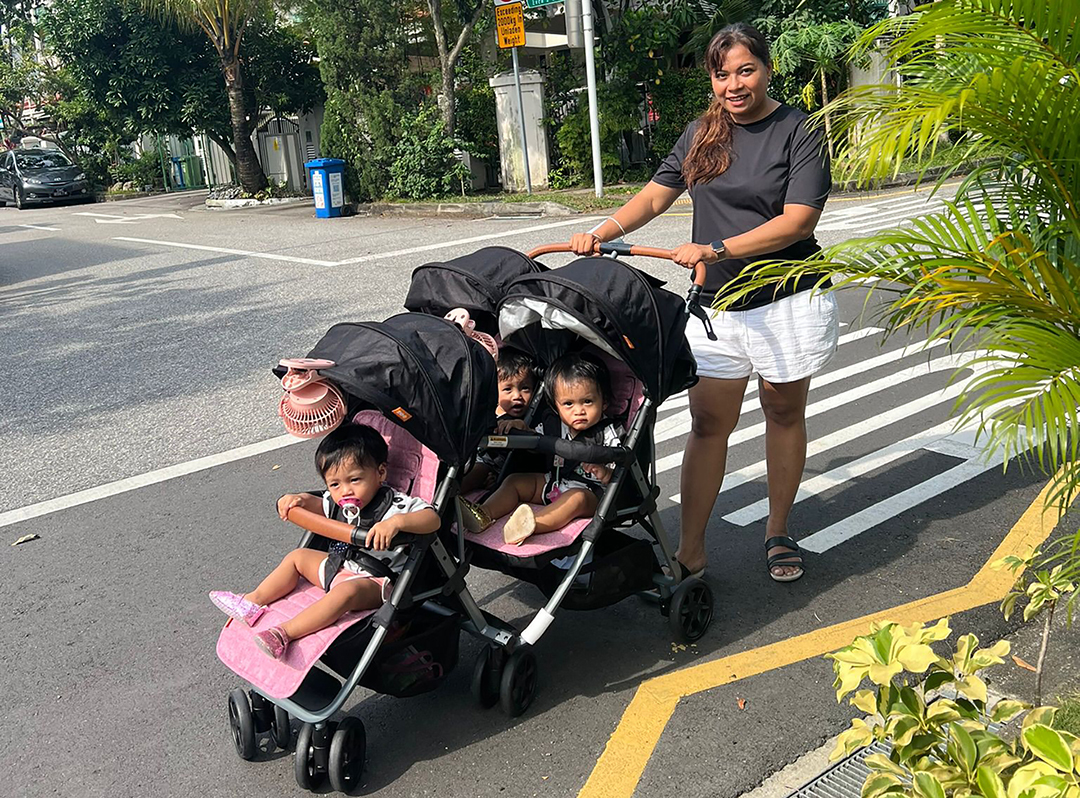Water is like the body's builder, quietly working inside us. It's a big part of our cells, helping them move nutrients around and get rid of waste. Every time we take a sip, water does a lot of important jobs, keeping us clean, fed, and just right in temperature.
–––
What happens when my child doesn't drink enough water?
Here are some symptoms:
Fatigue and Lethargy: Inadequate hydration can lead to feelings of tiredness and lethargy as the body's energy levels are affected by a lack of proper fluid balance.
Darker urine: A darker than pale yellow shade of your child's pee can signify dehydration.
Headaches: Dehydration can contribute to the onset of headaches, as the brain temporarily contracts due to the loss of fluids.
Dizziness: Insufficient fluid intake results in a reduction in blood volume, leading to a decrease in blood pressure and inadequate blood supply to the brain, resulting in feelings of lightheadedness.
Dry Skin: Insufficient water intake may lead to dry and cool skin. Inadequate hydration affects the skin's ability to maintain moisture, potentially resulting in a dull complexion and increased sensitivity.
Muscle Cramps: Dehydration can cause electrolyte imbalances, leading to muscle cramps and spasms, particularly during physical activity.
Difficulty Concentrating: Insufficient water intake may impair cognitive function, making it challenging to focus, concentrate, or stay alert.
Constipation: Lack of proper hydration can contribute to constipation, as water is essential for maintaining the smooth passage of stool through the digestive system.
How much water does my child need?
The recommended daily water intake for children can vary depending on factors like age, weight, climate, and activity level. As a general guideline from reputable health organizations such as the American Academy of Pediatrics:
Young Children (1-3 years old): About 950 ml (32 ounces) of water per day.
Children (4-8 years old): About 1.2 liters (40 ounces) of water per day.
Girls (9-13 years old): About 1.7-1.9 liters (56-64 ounces) of water per day.
Boys (9-13 years old): About 1.9-2.4 liters (64-80 ounces) of water per day.
These are general recommendations, and individual needs may vary. Children who are more active or live in warmer climates may need more water to stay properly hydrated. Do remember that the above guideline is inclusive of water from all beverages and foods such as soups.
“Mama, you know that you can’t force us to drink water right?”
Well, my youngest child was absolutely right. In my defense, I didn’t realize she perceived my reminders to drink water as forceful commands. As a parent, it frustrates me when the kids don't drink enough water! After some research and surveying other parents, here are methods we’ve tried out in the home with some success:
1. Make it Flavorful:

Encourage kids to drink more water by making it an enjoyable experience. Add a splash of natural flavor by infusing water with slices of fruits like citrus, berries, or cucumber. We'd advise against mixing juice with water though – plain water is most ideal!
2. Lead by Example:

Children often mimic our behavior, so set a good example by regularly drinking water yourself. Make it a family habit to have water readily available at meals and snacks. When kids see us embracing hydration, they are more likely to adopt the habit.
3. Use Creative Containers:

Invest in colorful and engaging water bottles or cups featuring their favorite characters or designs. Having a designated, appealing container can make drinking water more enticing for kids. Additionally, involve them in choosing their water bottle to give them a sense of ownership and excitement about staying hydrated. My children loved to refill their own cups using mini glass pitchers as it made them feel like an adult!
4. Create a Hydration Chart:

Make hydration a visual and rewarding experience by creating a hydration chart together. Allow your child to place a sticker or draw a smiley face every time they finish a cup or bottle of water. This simple chart not only serves as a visual reminder but also turns staying hydrated into a fun and rewarding activity.
5. Set Regular Water Breaks:

Integrate regular water breaks into your child's routine. Encourage them to have a small sip of water between activities or designate specific times for a "water break." Creating a routine around hydration helps establish the habit and ensures they get an adequate intake throughout the day.
6. Make it Visual and Fun:

Put a rubber band around a transparent bottle or cup to indicate where the water level should be after your child is done drinking. Alternatively you can use a reusable sticker of any animal the child likes, to encourage drinking till the animal is ‘floating’ on the water, etc. Using reusable straws may also make the drinking process more exciting for children.
7. Read about Hydration together:

This method is actually pretty helpful for our family. Read books that explain the incredible role water plays in keeping our bodies strong and healthy. Use stories to spark curiosity about the body's needs, making the connection between hydration and feeling good. This educational journey not only promotes the habit of drinking water but also empowers kids with knowledge about how they can contribute to their own health.
8. Serve soupy meals:

Soups and stews are delicious ways to increase hydration for children, especially when they're under the weather! Our personal family favourites are creamy tomato soup, minestrone with chickpeas or cannellini beans, Indonesian beef soup, Chinese chicken and mountain yam soup and Japanese miso soup with tofu and seaweed!
–––
Cheers to raising healthy, happy kids, one sip at a time!
Wish to be featured or have any tips to share with our community? Drop us a note here!
All content from this website, including images, cannot be reproduced without credits or written permission from Multiples Matter.








